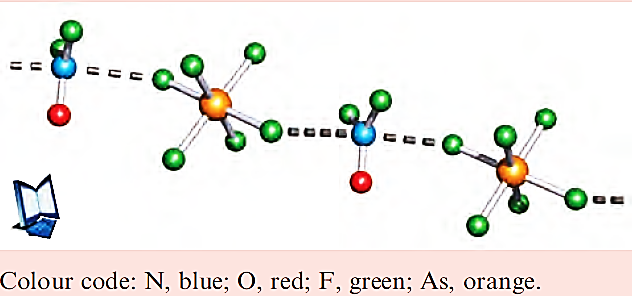


 علم الكيمياء
علم الكيمياء 
 الكيمياء التحليلية
الكيمياء التحليلية 
 الكيمياء الحياتية
الكيمياء الحياتية 
 الكيمياء العضوية
الكيمياء العضوية 
 الكيمياء الفيزيائية
الكيمياء الفيزيائية
 الكيمياء اللاعضوية
الكيمياء اللاعضوية 
 مواضيع اخرى في الكيمياء
مواضيع اخرى في الكيمياء
 الكيمياء الصناعية
الكيمياء الصناعية |
Read More
Date: 4-7-2017
Date: 28-3-2017
Date: 23-2-2017
|
Crystal structure disorders: disorders involving F and O atoms
Not all structure solutions are straightforward. Some involve disordering of atomic positions, a problem that, for example, made the elucidation of the structure of C60 difficult. Examples of disordered structures occur commonly in oxofluorides because the O and F atoms are similar in size and possess similar electronic properties. Thus, in a crystal containing molecules of an oxofluoride XFxOy, a given atomic position might be occupied by O in one molecule and by F in another molecule. The overall result is modelled by fractional occupation of each site by O and F. Fractional occupancies can lead to difficulties in determining true X_F and X_O bond lengths and true bond angles. The compound [F2NO][AsF6]- represents a classic example of the problem. Although first prepared and characterized
in 1969, its structure was not reported until 2001. The [F2NO] ions in crystalline [F2NO][AsF6] are disordered such that the fluorine occupancy of each ‘F’ position is 78% and 77% respectively (rather than being 100%), and the fluorine occupancy of the ‘O’ position is 45% (rather than being 0%). The paper cited in the further reading below illustrates how the structural data can be treated so that meaningful N_O and N_F bond lengths and F_N_F and F_N_O bond angles are obtained. Crystalline [F2NO][AsF6] is composed of infinite chains of alternating cations and anions. There are close contacts between the N atom of each cation and the F atoms of adjacent [AsF6]- ions as shown in the figure.




|
|
|
|
دخلت غرفة فنسيت ماذا تريد من داخلها.. خبير يفسر الحالة
|
|
|
|
|
|
|
ثورة طبية.. ابتكار أصغر جهاز لتنظيم ضربات القلب في العالم
|
|
|
|
|
|
|
العتبة العباسية المقدسة تقدم دعوة إلى كلية مزايا الجامعة للمشاركة في حفل التخرج المركزي الخامس
|
|
|